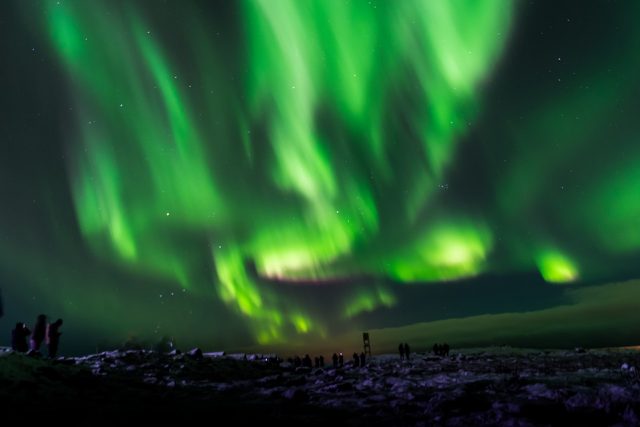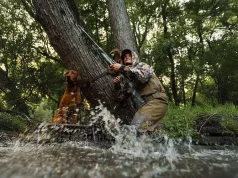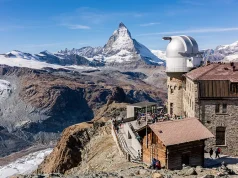
Imagine standing at the top of the world—Arctic silence all around, frozen peaks glowing faintly in starlight, and then, suddenly, a curtain of green fire ripples across the heavens. This is Svalbard, a remote Norwegian archipelago halfway between mainland Norway and the North Pole. It’s a land where polar bears roam and the sun disappears for months, making it one of the most extraordinary places on Earth to witness the aurora borealis.
Unlike crowded hotspots like Tromsø or Reykjavik, Svalbard offers a rare combination: endless darkness, untouched wilderness, and virtually zero light pollution. Getting here requires effort, but those who make the journey are rewarded with an aurora-hunting experience like no other—often best enjoyed on a guided northern lights tour designed for Arctic conditions.
When to See the Northern Lights in Svalbard
The Polar Night Advantage
The best time for aurora viewing in Svalbard is during the polar night, from mid-November through late February. For nearly four months, the sun never rises—plunging the region into 24-hour darkness. Far from being bleak, this creates a dream scenario for aurora hunters: every hour of the day is prime viewing time.
The darkest period, from late November through January, offers the strongest contrasts and the longest opportunities. Unlike southern destinations, where night limits your chances, Svalbard provides a continuous window for auroras to appear.
Weather and Solar Activity
Svalbard’s climate is both a gift and a gamble. The Arctic air is often dry and crystal-clear, producing breathtakingly sharp skies. But when storms arrive, they can linger for days, wrapping the archipelago in heavy clouds.
Auroras themselves depend on solar particles interacting with Earth’s magnetic field. The KP index (measuring geomagnetic activity on a scale of 0–9) helps predict displays. Thanks to Svalbard’s extreme latitude (78°N), even a modest KP 2–3 can produce visible auroras. Stronger activity (KP 4+) brings dazzling overhead curtains that fill the entire sky.
Where to See the Northern Lights in Svalbard
Longyearbyen and Its Outskirts
Most travelers base themselves in Longyearbyen, the world’s northernmost town. While the town has some light pollution, you don’t need to go far for darkness. Just outside the settlement, spots near Svalbard Airport or along the town’s edge offer wide horizons and clear skies. Many hotels even provide aurora wake-up calls so you don’t miss spontaneous appearances.
Adventdalen Valley
A short 10–15-minute snowmobile ride from Longyearbyen takes you to Adventdalen, a vast open valley perfect for aurora viewing. The broad landscape offers unobstructed 360° skies, while its proximity to town keeps it relatively safe and accessible. Local guides favor this area for its mix of safety and spectacle, especially with the dramatic mountains framing the northern lights overhead.
Remote Wilderness Spots
For the adventurous, Svalbard’s Isfjorden coastlines and Foxfonna Plateau promise pristine, otherworldly experiences. These areas require guided tours due to safety regulations, but the reward is unmatched: solitude, untouched snowfields, and auroras undisturbed by human presence. Some lodges and camps even feature aurora domes or panoramic glass windows, allowing you to watch the lights in warmth and comfort.
How to Maximize Your Chances
Independent Viewing vs. Guided Tours
You can hunt for auroras on your own near Longyearbyen, but guided tours offer distinct advantages. Local guides track weather systems and aurora activity in real time, know the safest routes, and are trained to handle Arctic challenges—including polar bear safety. Joining a tour takes the stress out of planning and lets you focus solely on the lights.
Technology and Gear
Download Aurora Forecast apps like Aurora Forecast or Northern Lights Alerts for real-time updates. Combine them with Norwegian weather tools like Yr.no to track cloud cover.
For clothing, think survival-grade: thermal base layers, heavy insulation, windproof shells, insulated boots, and thick gloves. Cameras require tripods, spare batteries, and manual settings (ISO 800–3200, f/2.8–f/4, 5–20 second exposures).
Safety in Polar Bear Territory
Svalbard is home to roughly 3,000 polar bears—more than humans. Regulations require anyone leaving Longyearbyen to carry deterrents (and usually firearms). For this reason, unguided wilderness trips are discouraged unless you have proper training and permits. Staying close to town or joining guided excursions is the safest choice.
Patience and Planning
Aurora hunting is never guaranteed. You’ll need patience, flexibility, and at least 5–7 nights in Svalbard to maximize your chances. Plan with flexible accommodations, and let forecasts guide your daily rhythm. Many hunters describe the eventual sighting as more rewarding precisely because it isn’t predictable.
What to Expect
The northern lights in Svalbard aren’t always the neon spectacles seen on Instagram. Often, they appear as shifting gray-green veils, with colors intensifying as your eyes adjust or during stronger storms. What makes the experience extraordinary is the movement—curtains rippling, waves pulsing, and arcs expanding across the horizon.
The setting adds to the magic. In the deep Arctic silence, the aurora feels otherworldly—reflecting off frozen valleys and snowy peaks, creating landscapes that feel like scenes from another planet. Many visitors describe the experience as profoundly moving—both humbling and awe-inspiring.
Worth the Journey
Svalbard offers one of the purest Northern Lights experiences on Earth. With its endless polar night, untouched wilderness, and low visitor numbers, it feels like a private stage set for the aurora borealis.
Yes, getting here requires more effort, expense, and planning than other aurora destinations. But for those who make the journey, the reward is extraordinary: auroras dancing across skies untouched by time, over a wilderness where nature still reigns supreme.
Travel with respect—for the Arctic environment, its wildlife, and its rhythms—and you’ll find the northern lights here are more than just a phenomenon. In Svalbard, they’re a reminder of Earth’s raw beauty at the very edge of the world.





